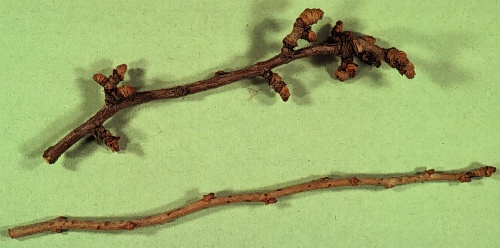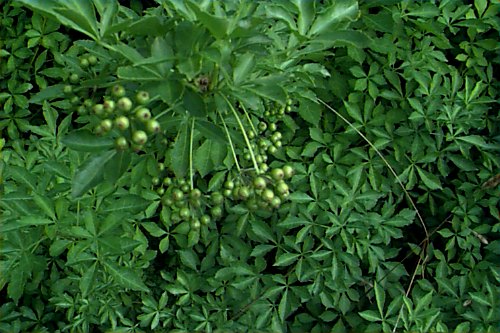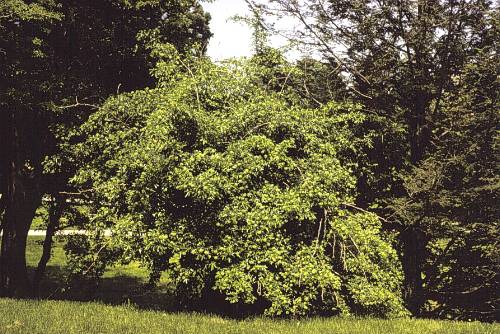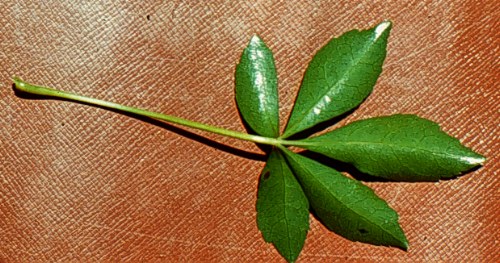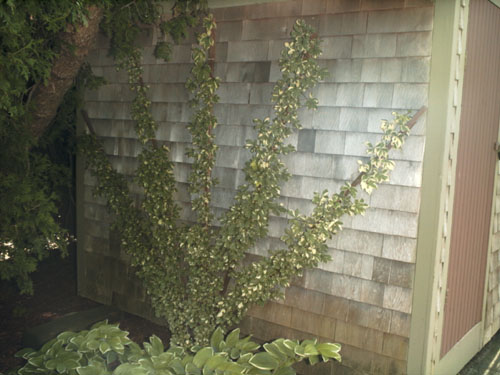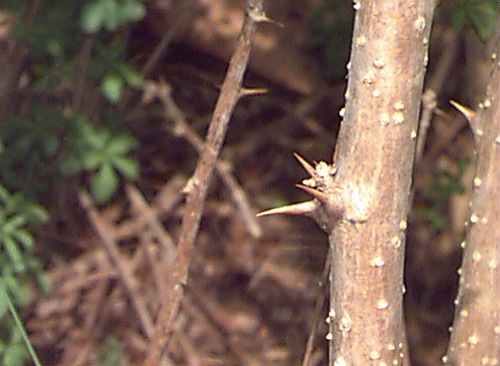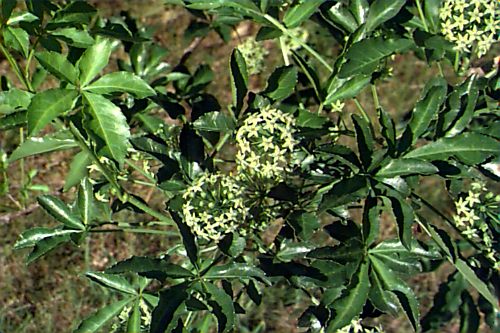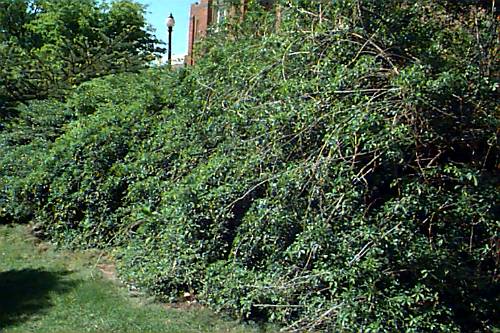Eleutherococcus (Acanthopanax) sieboldianus
Fiveleaf Aralia
Araliaceae
ExpandHabitat
- native to Japan
- zone 4
Habit and Form
- medium to large shrub
- deciduous
- long main branches, erect with age.
- comprised of numerous, unbranched basal suckers
- 8' to 10' tall by 8' to 10' wide
- medium texture
Summer Foliage
- alternate, palmately compound leaves with 5 to 7 leaflets, 1" to 2.5" long each by 1" wide; long petiole (up to 3")
- bright green color, high quality
Autumn Foliage
- leaves remain late into fall
- no fall color (remains green)
Flowers
- May
- small, greenish-white, in an umbel
Fruit
- black berry, 0.25" with 2 to 5 seeds
- few produced in cultivation
Bark
- stems light gray and warty
- small thorns beneath buds
Culture
- adaptable to many unfavorable conditions
- tolerates alkaline, heavy, sandy, dry or poor soils
- tolerates heavy shade, air pollution, and severe pruning
- can be a rampant grower on ideal sites
- benefits from occasional rejuvenation pruning
Landscape Uses
- ideal for urban sites and places where other plants fail
- effective as a barrier plant, screen, mass plantings
- good for dry shade
Liabilities
- thorns are small, but very sharp, a useful attribute for a barrier planting
ID Features
- palmately compound leaves
- long main branches erect with age
- thorns on young wood; may have spur wood on older branches
- broken stems smell like gin
Propagation
- softwood cuttings root easily
- seeds require warm:cold stratification
Cultivars/Varieties
'Variegatus'- A commonly available, popular form with leaflets edged or blotched with creamy-white. Generally less vigorous than the straight species (not usually exceeding 5' tall). Between individuals there is great variation in vigor and degree of variegation. A beautiful plant for a shady, protected shrub border. Tolerates drier soils. As shown below, it can also be treated as an espalier on a wall or similar structure.
